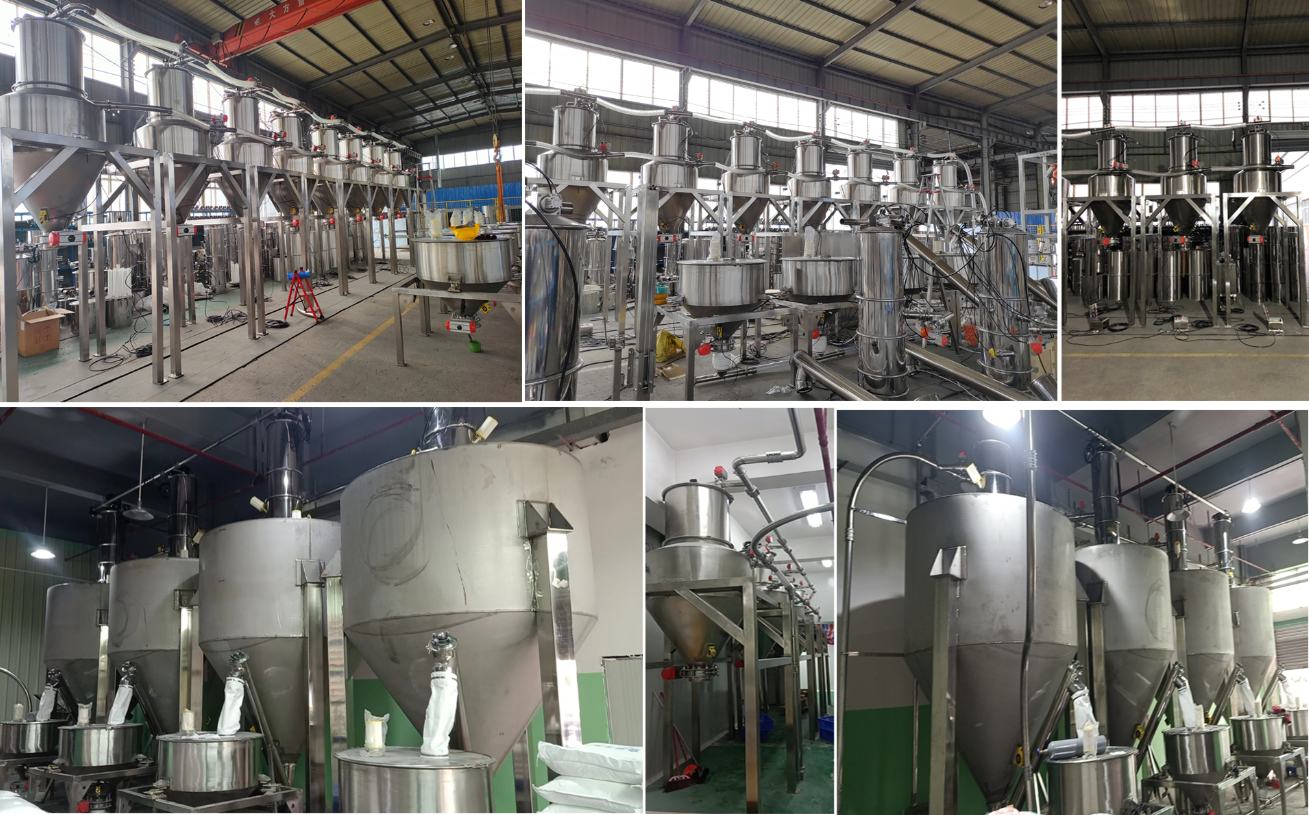×
| Comparison Item | Traditional Manual Feeding | One-drag-eight Vacuum Feeder Quantitative Automatic Feeding | Efficiency Improvement Effect |
|---|---|---|---|
| Feeding Process | Manually transport flour bags to the side of the flour mixer, open the flour bags, manually pour flour into the flour mixer, and control the amount of flour based on experience. The process is repeated. | The worker places the flour bags on the unpacking platform. The vacuum feeder main machine starts to create negative pressure and transports the flour to the corresponding flour mixer storage hopper through eight branch pipes. The intelligent control system automatically starts and stops the feeding based on the preset amount. | Achieves automation, reduces intermediate links, and greatly improves continuity. |
| Single-batch Feeding Time | It takes an average of about 10 minutes to transport and pour a 50-kilogram bag of flour. | It takes an average of only 2 minutes to transport a 50-kilogram bag of flour to the designated storage hopper. | Efficiency increased by 80%. |
| Manpower Requirement | When 8 flour mixers are operating simultaneously, at least 4 workers are required to transport and pour flour back and forth. | Only 1 worker is needed to monitor the operation of the equipment and parameters at the control console. | Labor cost reduced by 75%. |
| Flour Feeding Accuracy | Controlled based on worker experience, with relatively large errors. | Controlled by an intelligent metering device, with errors controllable within ±0.5%. | Accuracy significantly improved, and the quality of the dough pieces is stable. |
| Workshop Environment | Flour dust is pervasive, with a flour dust concentration as high as 50mg/m³. | Transported through enclosed pipes, with the flour dust concentration reduced to below 10mg/m³. | Meets national standards and greatly improves the working environment. |
1. Process flow: Manual → Bag opener → One-to-four conveyor → Negative pressure conveying → Storage silo → Screw metering discharge → Weighing silo → One-to-eight negative pressure conveying → Temporary storage silo → Dough mixer
2. Process Description: Manual handling of small bags into the dust-free feeding station, where an online safety screen separates out foreign objects. The finished product is discharged from the bottom and connected to the negative pressure conveying system, which feeds it into the storage silo. When the dough mixer No. 1 sends a feed signal, manually activate the electric control key No. 1 to start the metering screw, which quantitatively feeds material into the four weighing silos. After feeding is complete, the signal is fed back to the one-to-eight negative pressure powder conveying system. The negative pressure powder conveying system starts supplying material to Bin 1. After feeding is complete, the master control stops the conveying process. When material supply is required for Dough Mixer No. 2, the operator manually activates the No. 2 key to cycle through the process.
3. The discharge screw is designed to complete material discharge within 2 minutes, and the negative pressure conveying system is designed to complete material transfer within 2 minutes.
